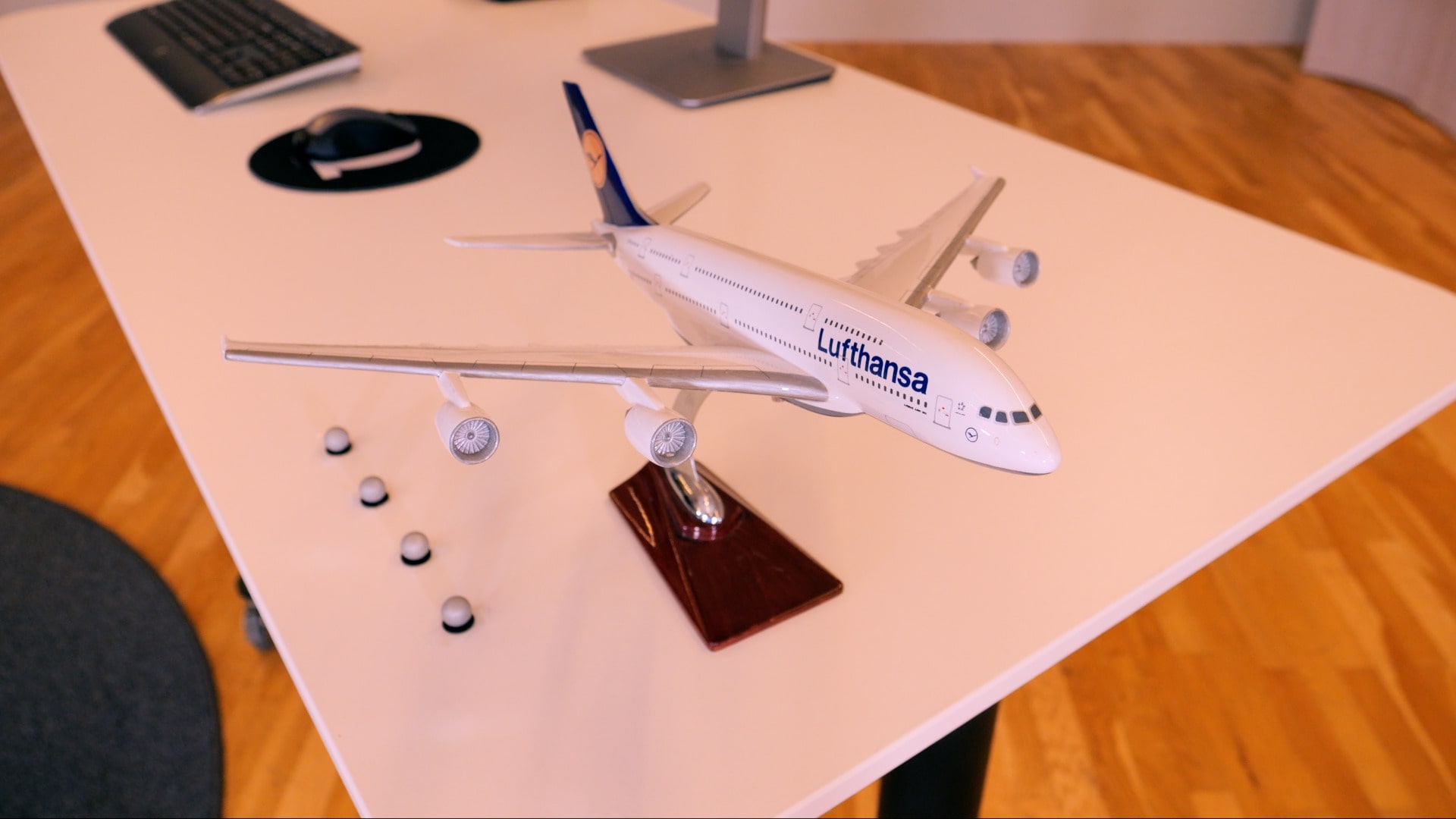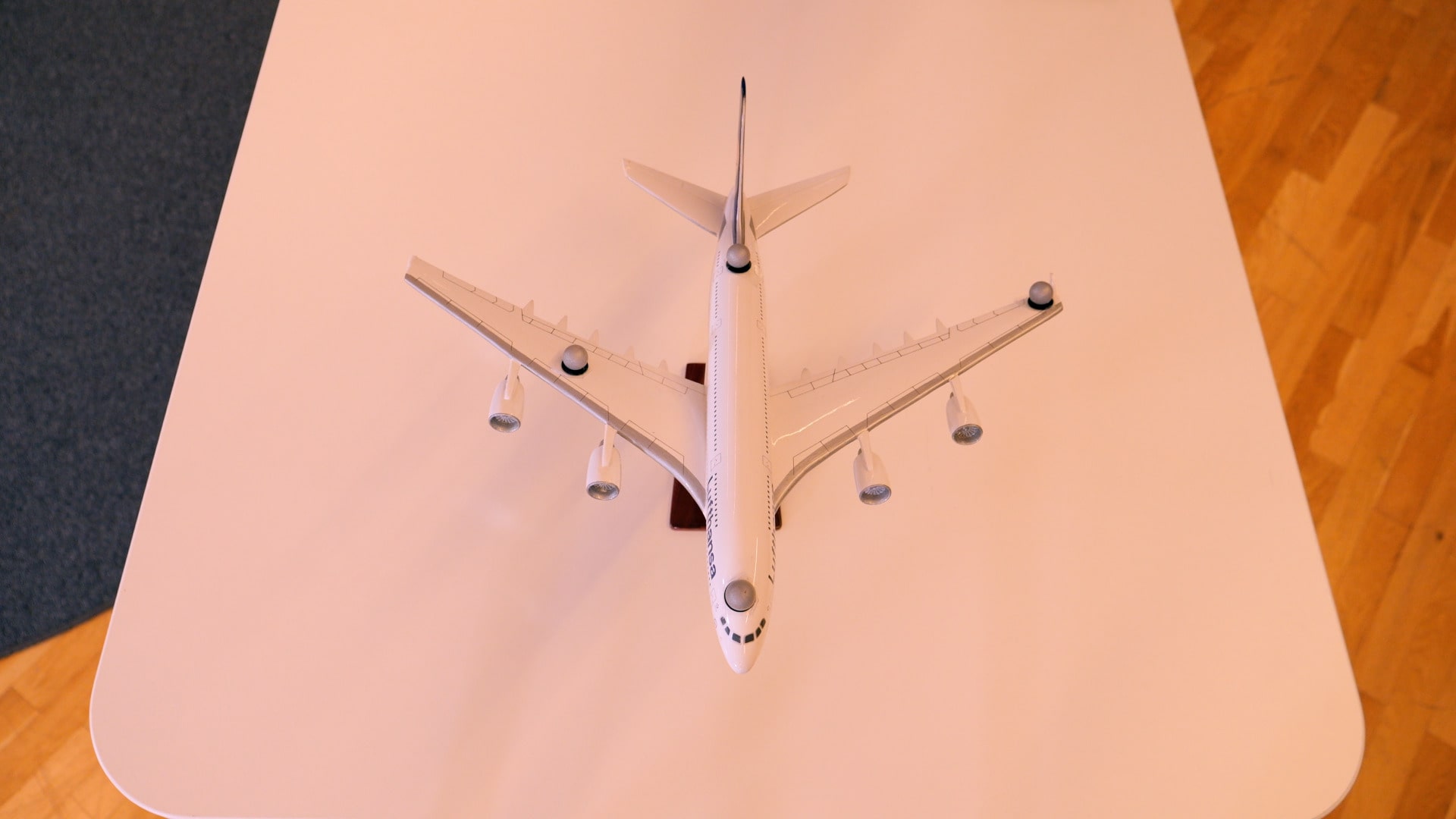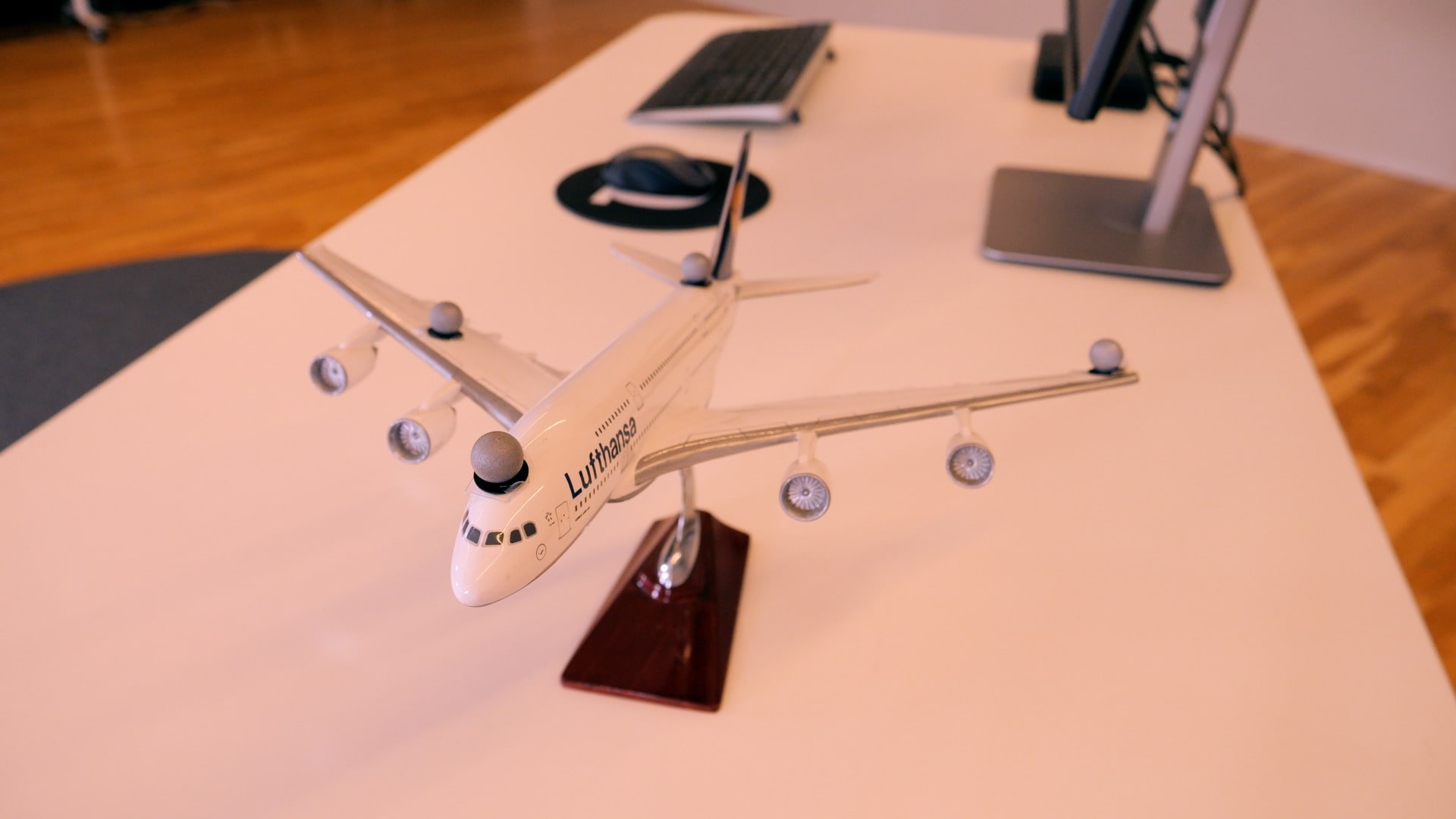Placing markers on a rigid body
A rigid body can be created from any solid object as long as the following requirements are met:
-
At least three markers are necessary for tracking a rigid body, and additional markers can help prevent gaps in your data if a marker gets blocked from the cameras’ view.

-
The markers must be placed asymmetrically and spread out across the object so that its orientation will be uniquely defined. For instance, if three markers were placed in an equilateral triangle, QTM would not be able to differentiate the sides from each other.

-
For rigid body tracking to work, the markers cannot be in a straight line, and they should be placed at unique distances from each other. It is also recommended to space the markers as far away from each other as possible to avoid markers getting merged.

Note that when using active markers—such as those on the active Traqr—the marker IDs will be included in the rigid body definition, so the arrangement of markers does not have to be unique or asymmetric.
-
From a biomechanical perspective, body segments should not be defined as rigid bodies, even if you’re tracking them with clusters, due to the complexity of human motion.
Reference: Cappozzo, A. et al. (1998). Surface-maker cluster design criteria for 3-D bone movement reconstruction. IEEE Transactions on Biomedical Engineering, Vol. 44 (12), pp. 1165-74.